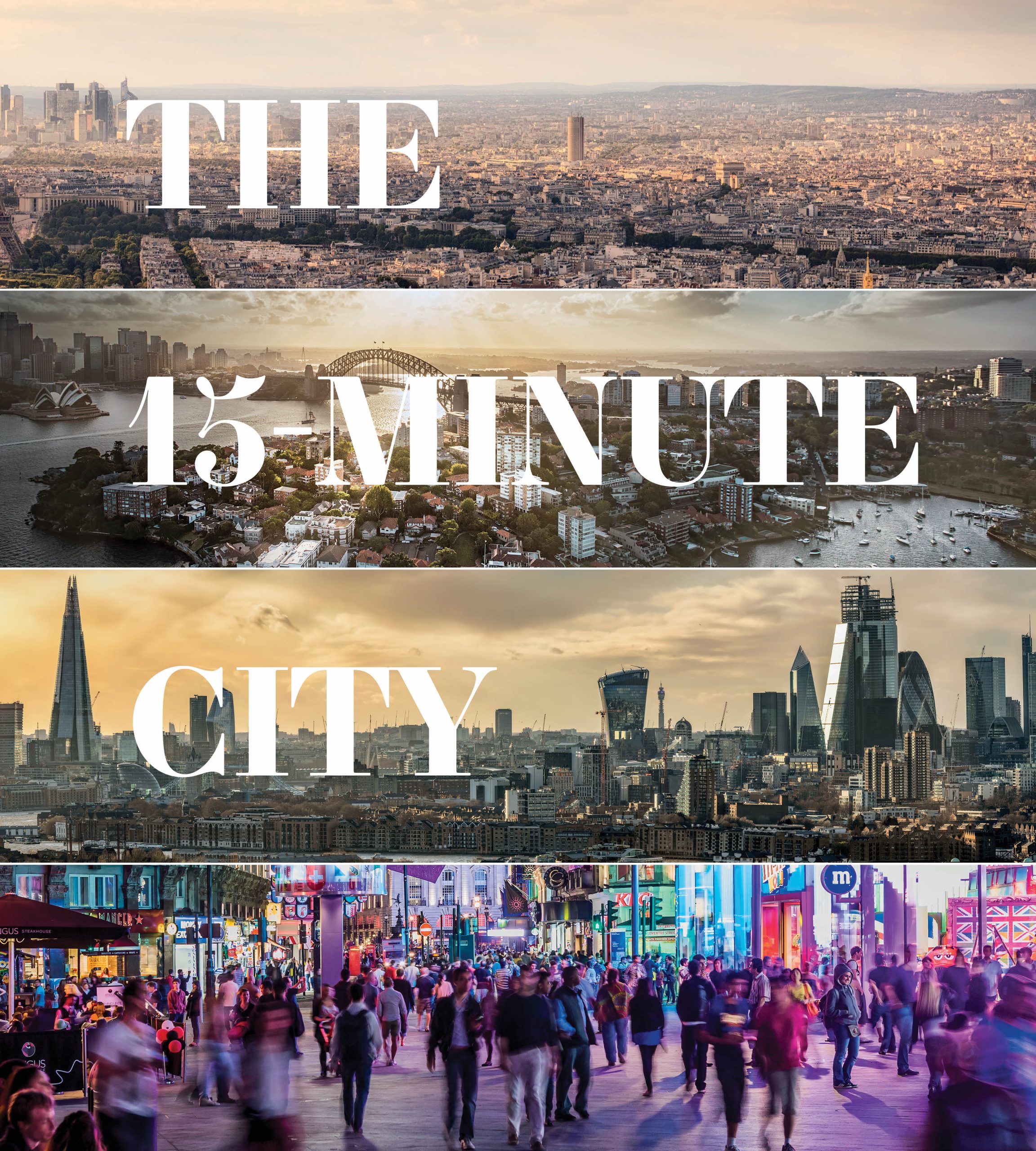Language
You can read the magazine in one of the following languages
If there was one shift the pandemic made to our lives, it was rediscovering locality – the often missed opportunities that suddenly gained our attention, like that coffee store nearby that you never ventured into because you were rushing to the central business district.
What has arisen out of this is the rebirth of the ‘15-minute city’ model, which advocates the concept of building cities around people and ensuring that they have easy access to facilities that they need by foot or bike. It is designed to fulfil the following functions: living, working, supplying, caring, learning and enjoying, thus improving our quality of life. While not new, today’s version of this idea, which has its roots in Europe, is a direct response to factors like climate change, the recent pandemic and globalisation.

Among the cities that are adopting this approach are Seattle, Melbourne, Madrid, Shanghai and Paris to facilitate a more sustainable and healthier lifestyle that also promotes a stronger sense of community. In Paris, for instance, increasing cycle and pedestrian paths has been underway to support its plan to become carbon neutral by 2050, while creating a number of neighbourhoods that put people first by encouraging them to take advantage of local facilities, including parks and co-working spaces.
“The ‘15-minute cities’ can be an alternative in the future, with fewer commuters, more local life and fewer visitors,” says Roxana Bobulescu, Associate Professor at Grenoble Ecole de Management, whose research focuses on economic degrowth.
She also believes that our perceptions of cities are changing. “Can we expect cities to regain their attractiveness? The scenario seems unlikely to me for two reasons: the development of teleworking, which ‘homogenised’ the space, and the discovery of a slower and healthier way of life away from the megacities,” she explains.

“The conditions imposed by the pandemic have shown the fragility of large megacities in the face of future crises. In Paris, a real urban exodus was born with the pandemic. The attractiveness of these cities is declining.”
In a similar vein, David Hensher, Professor of Management at The University of Sydney Business School, predicts that work locations will be increasingly selected based on their proximity to one’s place of residence. “We can anticipate a growing interest outside of CBD locations for satellite or third office spaces as a result of suburbanisation of activities, supporting the idea of a 15- or 30-minute city,” he suggests.
A reduction in office workers commuting to work five days a week may be here to stay. In fact, according to Hensher, it’s unlikely that we’ll see the numbers of workers in high-density office hubs that were evident in pre-COVID times, as many employees will negotiate more flexible work arrangements.
“The hollowing out of CBDs as office workers work remotely is likely to impact office districts. With respect to built form, there may be greater emphasis on mixed-use areas that combine workspaces with commercial and residential activities and open outdoor spaces,” explains Shauna Brail, Associate Professor at the Institute for Management & Innovation, University of Toronto Mississauga.

This suggests a possible trend towards multifunctional spaces or perhaps a greater number of facilities that serve different purposes other than work. “With reduced commuting activity as a result of working from home to some extent, and staggered working hours, we can expect, and are observing already, the relinquishing of leases for office space which will require other uses such as leisure facilities and/or accommodation,” Hensher affirms.
Whether or not the COVID-19 pandemic has ended what Bobulescu refers to as the “cult of bigness”, only time will tell. However, this crisis presents leaders with an opportunity to build back better in response to concerns like climate change and the desire for resilient communities.
